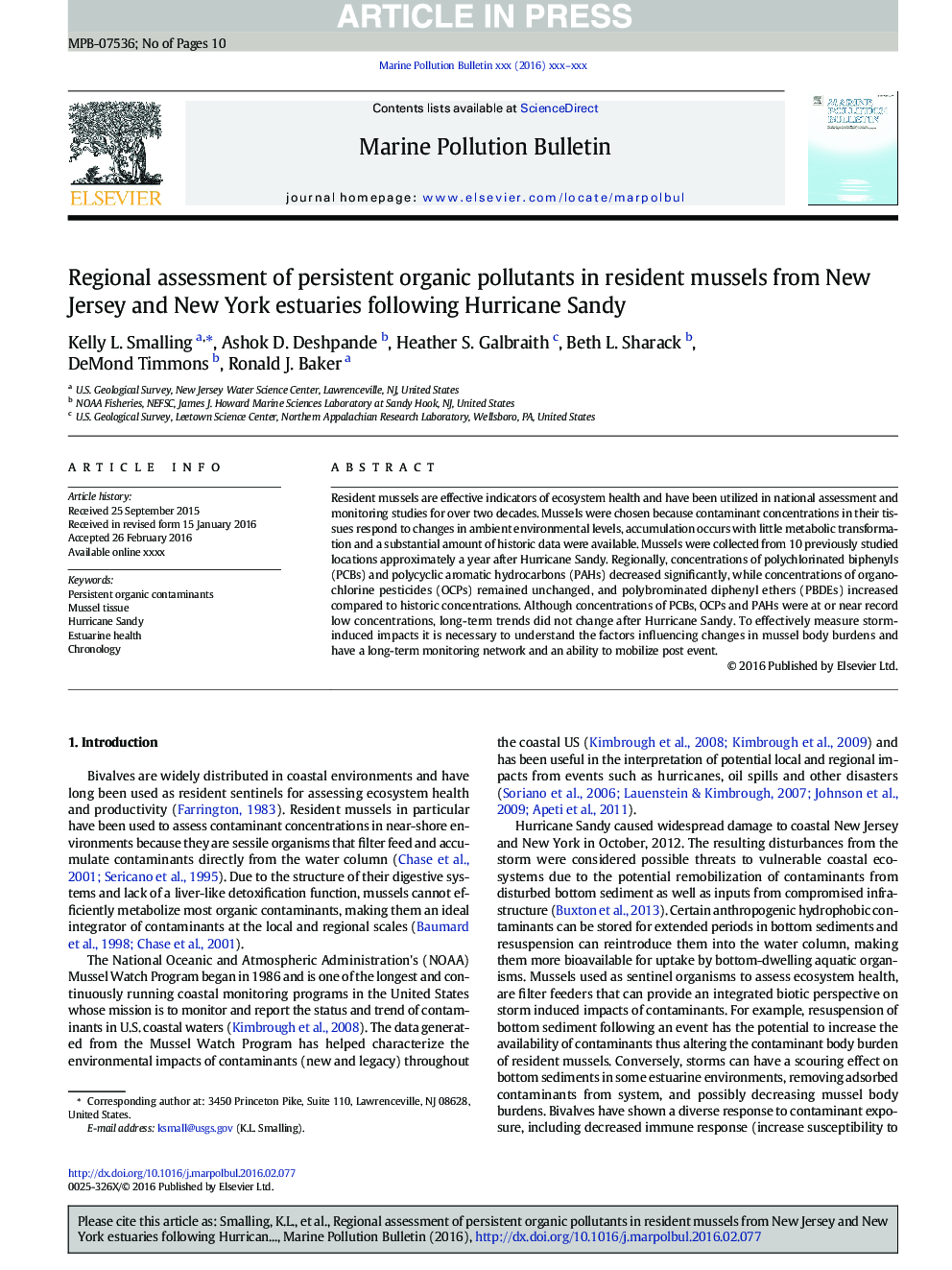| Article ID | Journal | Published Year | Pages | File Type |
|---|---|---|---|---|
| 6355791 | Marine Pollution Bulletin | 2016 | 10 Pages |
Abstract
Resident mussels are effective indicators of ecosystem health and have been utilized in national assessment and monitoring studies for over two decades. Mussels were chosen because contaminant concentrations in their tissues respond to changes in ambient environmental levels, accumulation occurs with little metabolic transformation and a substantial amount of historic data were available. Mussels were collected from 10 previously studied locations approximately a year after Hurricane Sandy. Regionally, concentrations of polychlorinated biphenyls (PCBs) and polycyclic aromatic hydrocarbons (PAHs) decreased significantly, while concentrations of organochlorine pesticides (OCPs) remained unchanged, and polybrominated diphenyl ethers (PBDEs) increased compared to historic concentrations. Although concentrations of PCBs, OCPs and PAHs were at or near record low concentrations, long-term trends did not change after Hurricane Sandy. To effectively measure storm-induced impacts it is necessary to understand the factors influencing changes in mussel body burdens and have a long-term monitoring network and an ability to mobilize post event.
Related Topics
Physical Sciences and Engineering
Earth and Planetary Sciences
Oceanography
Authors
Kelly L. Smalling, Ashok D. Deshpande, Heather S. Galbraith, Beth L. Sharack, DeMond Timmons, Ronald J. Baker,
